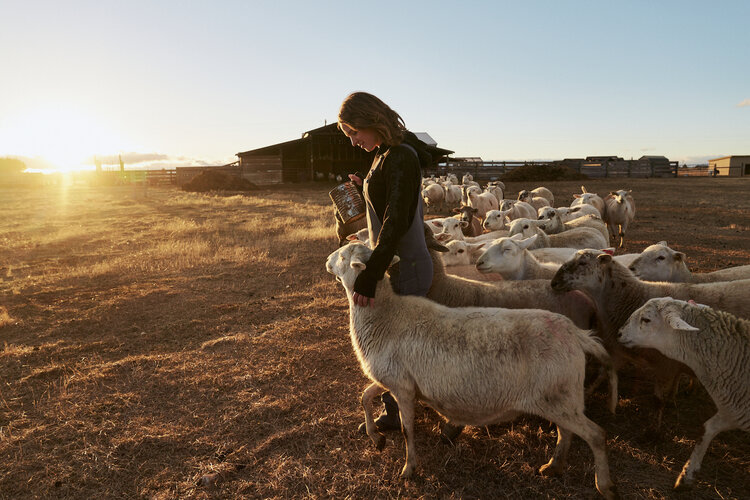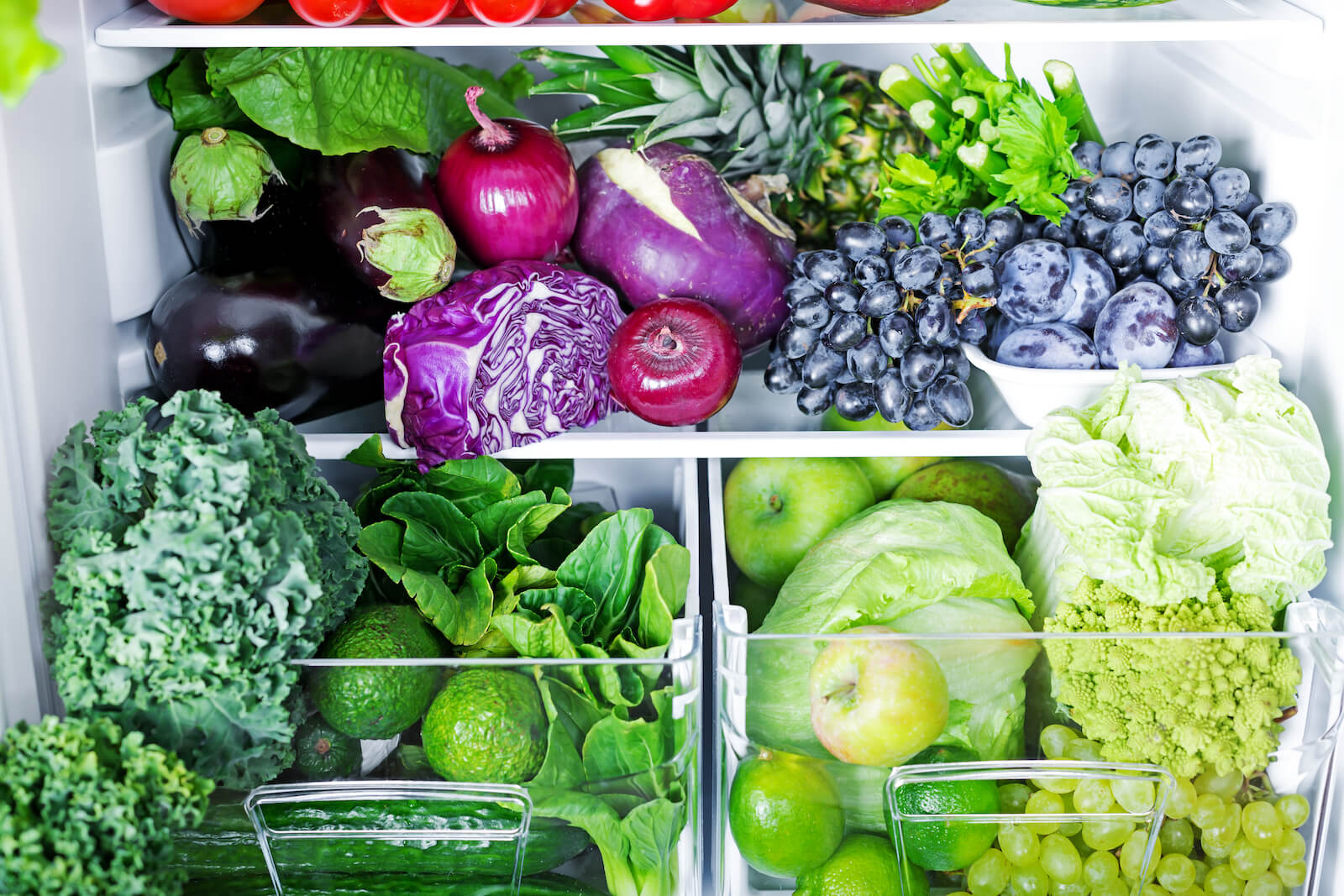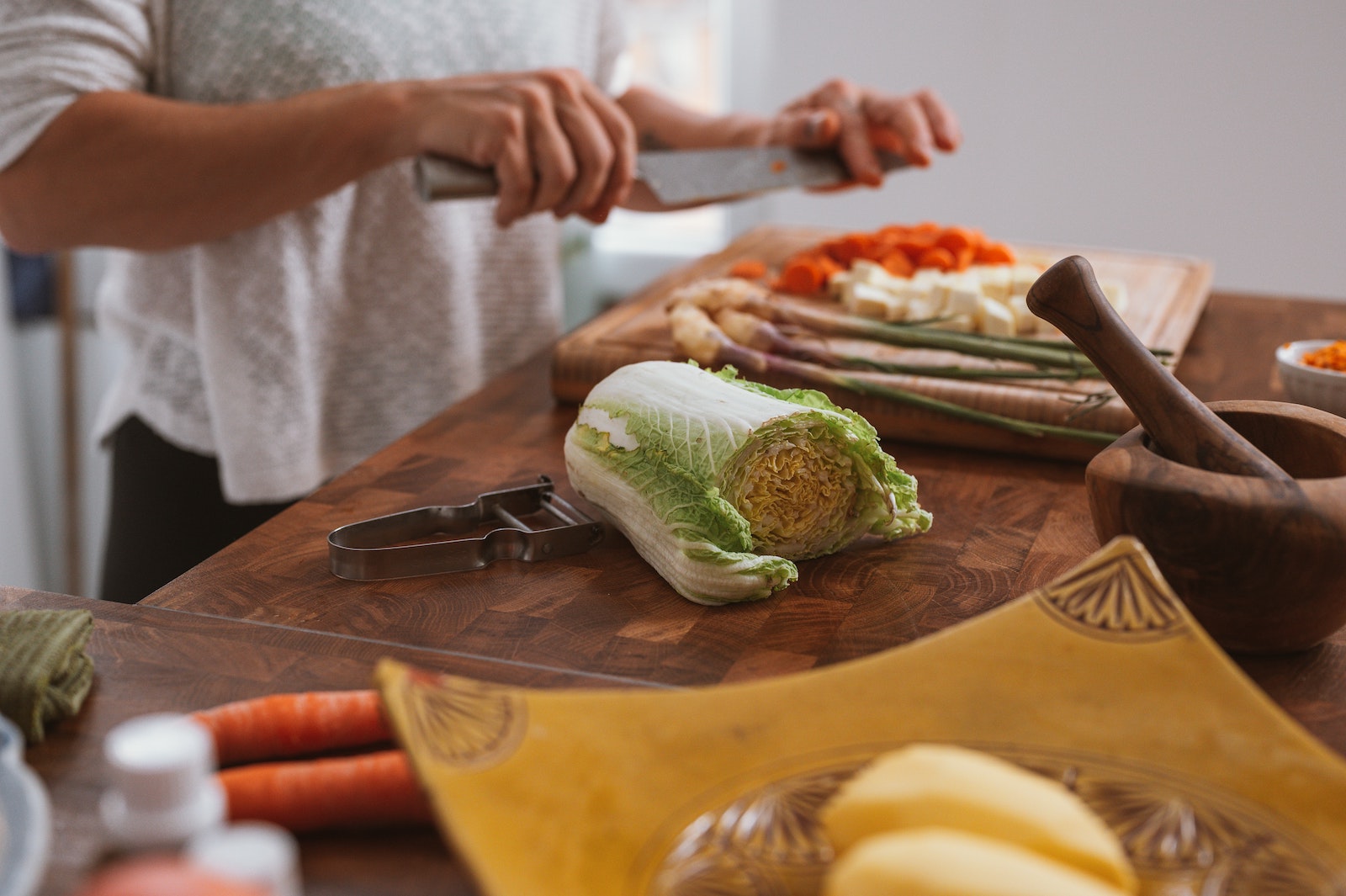Courtney Schuur and Ethan O’Brien are the owners of North 44 Farm – a first generation farm in Bend specializing in farm-direct deliveries of premium grass fed and finished lamb, beef, and seasonal poultry. They practice conscientious stewardship of their land and focus on raising healthy, stress-free animals using regenerative farming practices.
The love and respect the North 44 team show their animals shines through in the quality of their final product. All of us at Inspired Health are BIG fans of their meat and we’re excited to share this fun and informative conversation with Courtney!
Q: Hi Courtney! Let’s start with a little more about you! We’d love to know how you and Ethan found your way to ranching and how North 44 came to be.
CS: It’s been a long slow burn to get to farm life. I’m a former chef. I was lucky enough to work in restaurants where we sourced farm-direct products, which meant we often got to meet the farmers and hear about how they produce what they do. I loved every bit of it—their food was always better than what we’d source from the big companies. I loved nerding out with them about what they produced. Over time, I went from using these unique products in the kitchen to wanting to produce myself.
I left the cooking world, moved to Australia with my husband Ethan (where he’s from) and got a job in marketing while also starting a big backyard garden, and raising chickens and a few sheep with Ethan and a couple friends. Over time, the 9–5 didn’t feel satisfying to either Ethan or myself, and we knew it was time to go all-in on the farm dream. It was totally idealistic, but I really do think you need that idealism to pursue a dream.
We don’t have any formal training in agriculture. We’ve learned from YouTube, workshops, books, mentors, and trial and error on the job. Being first-gen farmers, we’ve made some hard mistakes along the way, but they have helped us make better decisions every year and over time, we’ve created some really cool systems that work for us and for the very unique Central Oregon ecosystem that we work within.
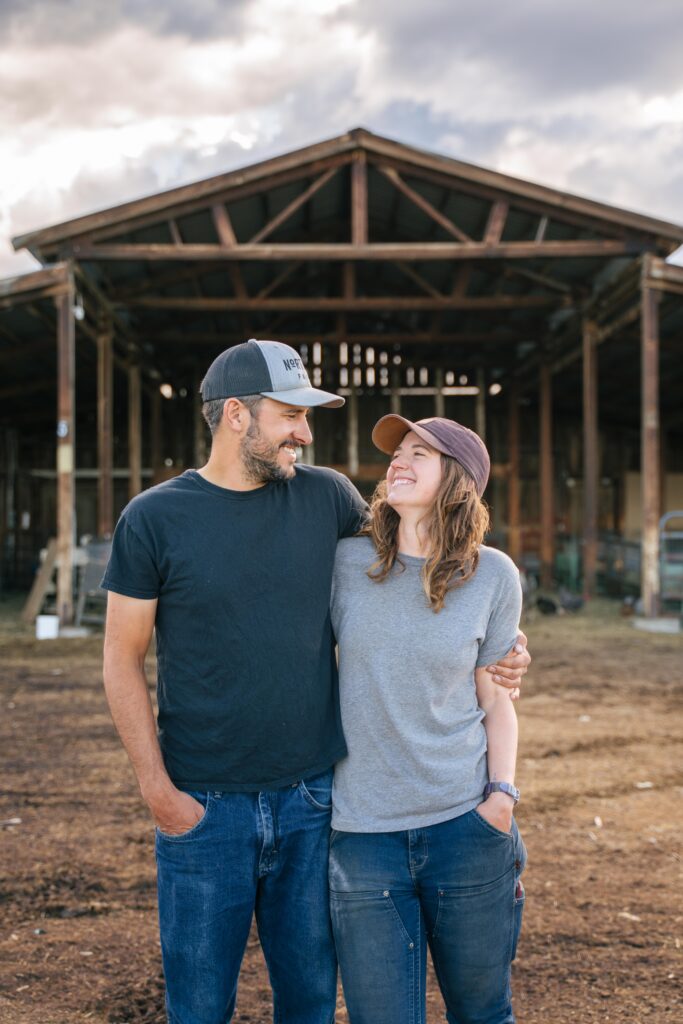
Q: Your lamb and beef are pastured raised and 100% grass fed and finished. The ‘grass finished’ part of the equation is a key differentiator. For our readers that are not familiar with this concept, can you explain why this is important as well as some of the health benefits associated with grass-finished meat?
CS: It is such a key difference and I love that it is getting the attention it deserves. Most ruminants (grass eating animals) spend a large portion of their lives in a pasture-based system. The real difference is how the animal is finished. Finishing refers to the final stage of an animal’s growth, when an animal moves to a higher calorie diet (usually corn) with the goal of putting on weight. In a grass-finished system like ours, animals continue their grass-based diet until they reach their end weight rather than being transitioned to grain or other feed towards the end of their lives. This approach produces meat with improved nutritional profiles; grass fed lamb and beef tends to have higher levels of omega-3 fatty acids, conjugated linoleic acid (CLA), and antioxidants. And it tastes way better too!
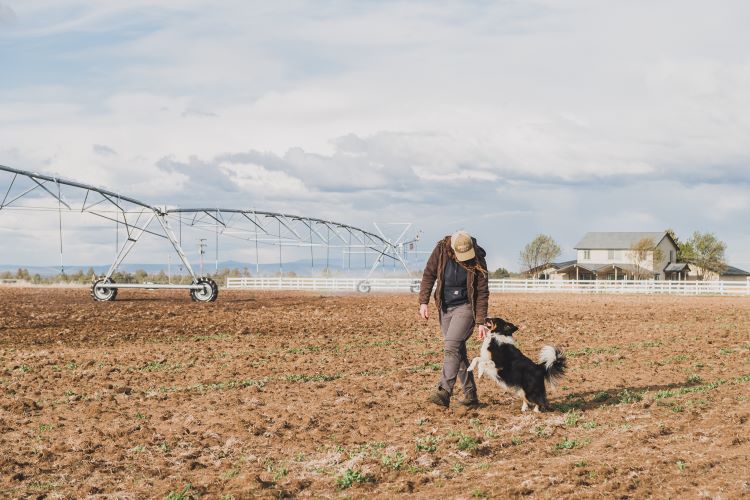
Q: Functional Medicine and Regenerative Farming have a lot in common! Both are focused on a holistic approach – caring for the whole body/ecosystem and digging in (pun intended:) to the soil/root cause of any issues. Can you geek out about soil for a minute and tell us why it matters so much?
CS: We always say that we’re grass farmers first and without healthy soil in our pastures, we wouldn’t have much to show for our efforts. When we first started out, we tried the traditional method of farming in Central Oregon which was pretty extractive. We then got hit with the biggest and longest drought Central Oregon has experienced and that helped us significantly change how we operate. We dug deep into learning about how to nurture our landscape, how to plant for the seasons, manage water better, cover crop, rotate fields, all with this end goal of creating resilient pastures that can hold up to the increasingly wild weather we have in Central Oregon.
What we’ve learned in our journey is that healthy soils that are diverse in forage without chemical inputs create that resiliency we were looking for – by using regenerative methods, we’re able to graze our herds for longer and have better growth earlier in the season. I am by no means an expert on the human gut microbiome but I’d say that the quality of what you eat is a key factor in how you (and your gut) feel. For us, the health of our animals starts with the soil – cultivating healthy soil creates healthy pastures and those pastures feed our animals and keep them thriving.
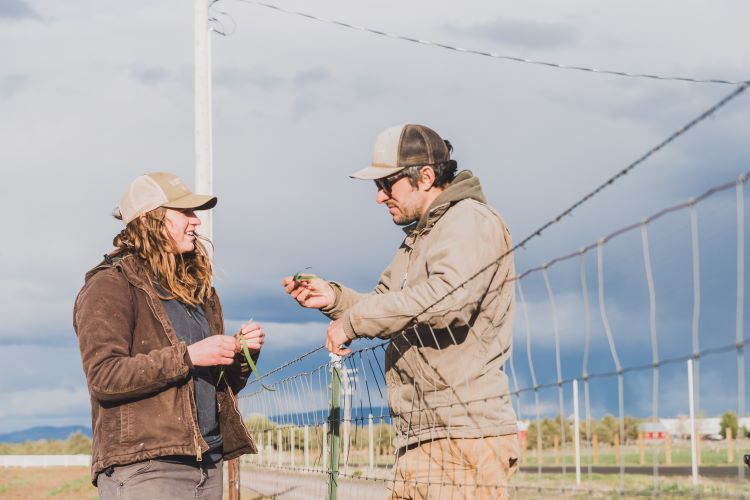
Q: Could you also explain the difference between dry-aged and wet-aged meat and why you choose to dry-age?
CS: In dry aging, whole sides of beef or primal cuts are hung in open air at a temperature just above freezing and left to age for several weeks. The benefit of this process is very tender meat with a stronger flavor.
Wet-aging is a relatively recent technique that developed along with advances in plastics and refrigeration. In this process, cuts of beef are vacuum-sealed in plastic and shipped to the market. The aging takes place in the 4-10 days between slaughter and sale while the meat is in transit.
We choose to dry age because the flavor is amazing! We also love to introduce people to dry aged meat, it’s rare to find at your everyday grocery store and grass fed, grass finished, dry aged meat is about as good as it gets! If you’re interested in learning more about these processes, this is a great article that I link to on our website as well.
Q: What is a cut of meat you wish more people would try?
CS: The slow cookers! In particular, beef and lamb shanks are seriously one of the most underrated cuts. They are a lower price point than premium cuts, they have a high amount of collagen, gelatin, and nutrient-rich bone marrow, and are so easy to prepare in a crockpot or dutch oven. I always have a few jars of bone broth made with beef or lamb shanks in the freezer. Just shred the meat after the broth is done cooking and you have a great base for any soup or stew.
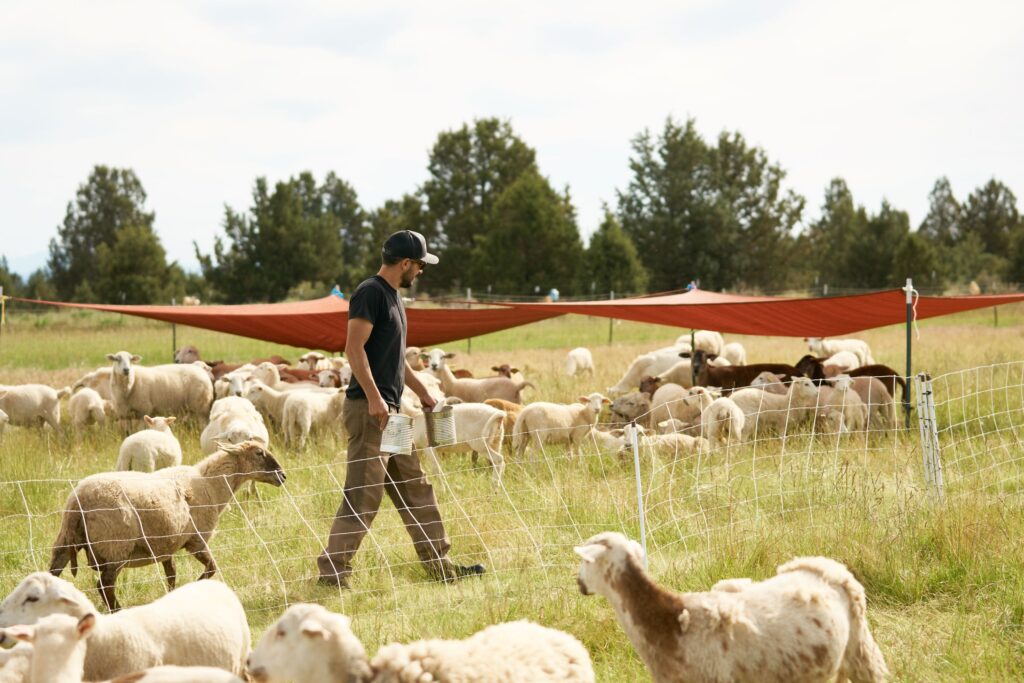
Q: Let’s say your mom is coming over for dinner (SHOUTOUT MARTHA!) What is HER favorite cut of meat and what dish are you making her?
CS: On the beef side of things, I would say a bone-in ribeye comes to mind so long as she gets the bone 😂. And for lamb, she loves a lamb shank – this Apple Cider Braised Lamb Shank recipe is one we both have cooked up often and love.
Be sure to check out one of Courtney’s other favorite spring recipes that we’re featuring on the blog this month —> Lamb Pasta with Asparagus and Feta
Q: Can you tell us about the North 44 Farm Club you created?
CS: Yes! Our Farm Club is a monthly delivery of our grass-fed lamb and/or beef delivered to your door. We wanted to create an easy, flexible way for people to enjoy our meat and thought that creating something like a local ButcherBox would work well. Our Farm Club members get monthly farm updates, recipes, and custom-packed boxes of our meat delivered to them every month – we really value our Farm Club members and do our best to show that!
Q: Like anything in life, we imagine days on the farm can be a mix of joy, fun, challenges, and unpredictability. What keeps you motivated?
CS: I think for any entrepreneur, you need to be passionate about what you do because you put so much effort into it. Farming is no different in that respect, things can change in a moment’s notice, there are hard days and wonderful days, but the motivation is that we love what we do! Getting to work on the land, with animals, and with each other and a small team of great people is something we don’t take for granted and are extremely passionate about.
Q: Which of our 8 Pillars of Inspired Health are you personally giving extra attention to these days?
CS: Right now I’m focused on Stress Management and Nutrition! Spring and summer are nonstop on our farm and it can be pretty easy to forget to eat well and to intentionally manage the stress. I try to meal prep to keep good food accessible and try and squeeze in some destressing early morning stretching where I can. It’s not always easy or possible with the pace of a farm in peak season, but I feel a noticeable difference when I do prioritize those two Pillars!
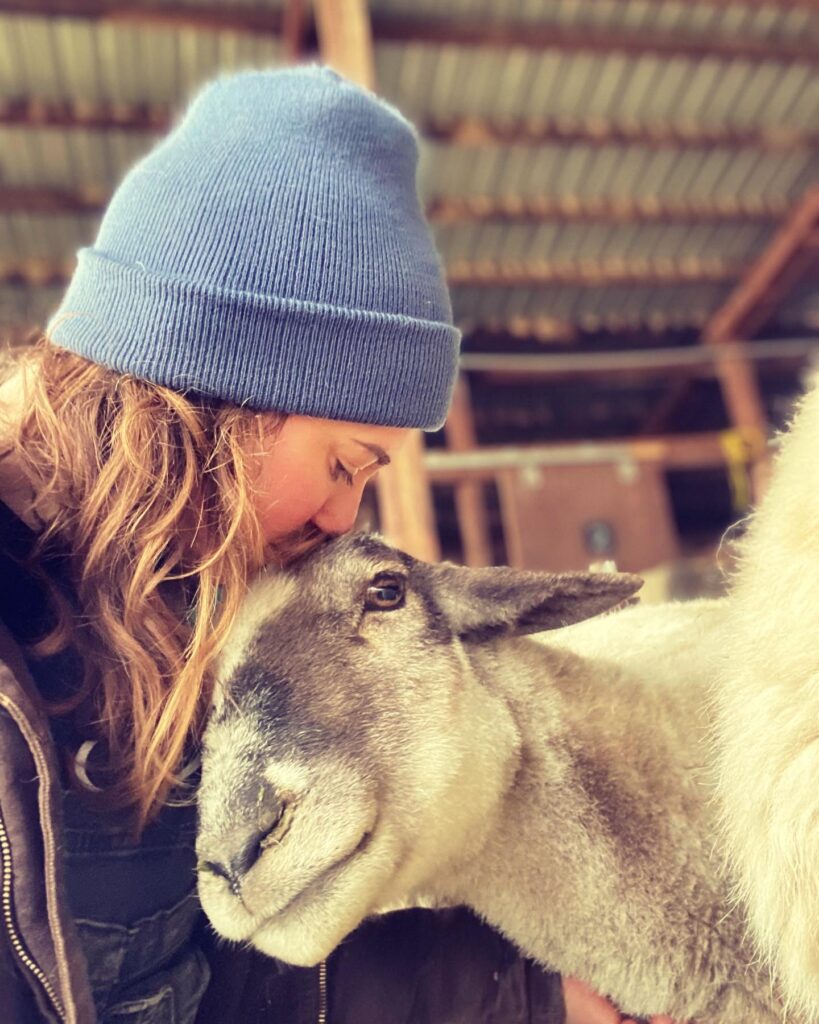
Q. Are there any books, podcasts, or shows that have inspired you lately?
CS: This one is very farm specific but Dirt to Soil by Gabe Brown was a great and very practical read about how one farmer transitioned their property from traditional to regenerative farming and the benefits he’s seen over the years. It was a great read!
Q: We’re curious! – What inspired the name North 44?
CS: The exact 44th parallel north runs right through our farm! We had so many other names in the running but we liked the simplicity of North 44 Farm.
Q. And as usual, let’s share some Central Oregon love! Can you share a couple of your favorite local businesses?
CS: There are so many great small businesses here – it’s such a vibrant community which is so cool to see and be a part of! We love Boundless Farmstead and Sungrounded Farm for their veggies, grabbing a glass of wine and some food at Ferm + Fare after a Wednesday market is always a treat, and I’ve been using and loving the skincare from Mystic Roots!
Thank you to Courtney and the team at North 44!
You can learn more about North 44 Farm at their website, and see more of daily farm life on their Instagram @North44Farm. A list of where you can find their products is HERE.
Better yet, meet Courtney, Ethan, and the North 44 team at the following Farmer’s Markets this summer:
- Bend Farmer’s Market: 11am – 3 pm every Wednesday, May – October
- Northwest Crossing Farmer’s Market: 10 am – 2 pm every Saturday, June – September
- Sister’s Farmers Market: 10 am – 2 pm first Sunday of the month, June – September
